written by 2018-2019 CIMA intern, Jiayi Gu
Undefeated by the bone-chilling morning on March 5th, 2019, CIMA members, fellows and staff gathered at the Whitney Museum of American Art, awaiting an in-depth tour of “Andy Warhol—From A to B and Back Again” guided by the exhibition’s curator Donna De Salvo (Deputy Director for International Initiatives and Senior Curator) and Neil Printz (Editor of The Andy Warhol Catalogue Raisonné).
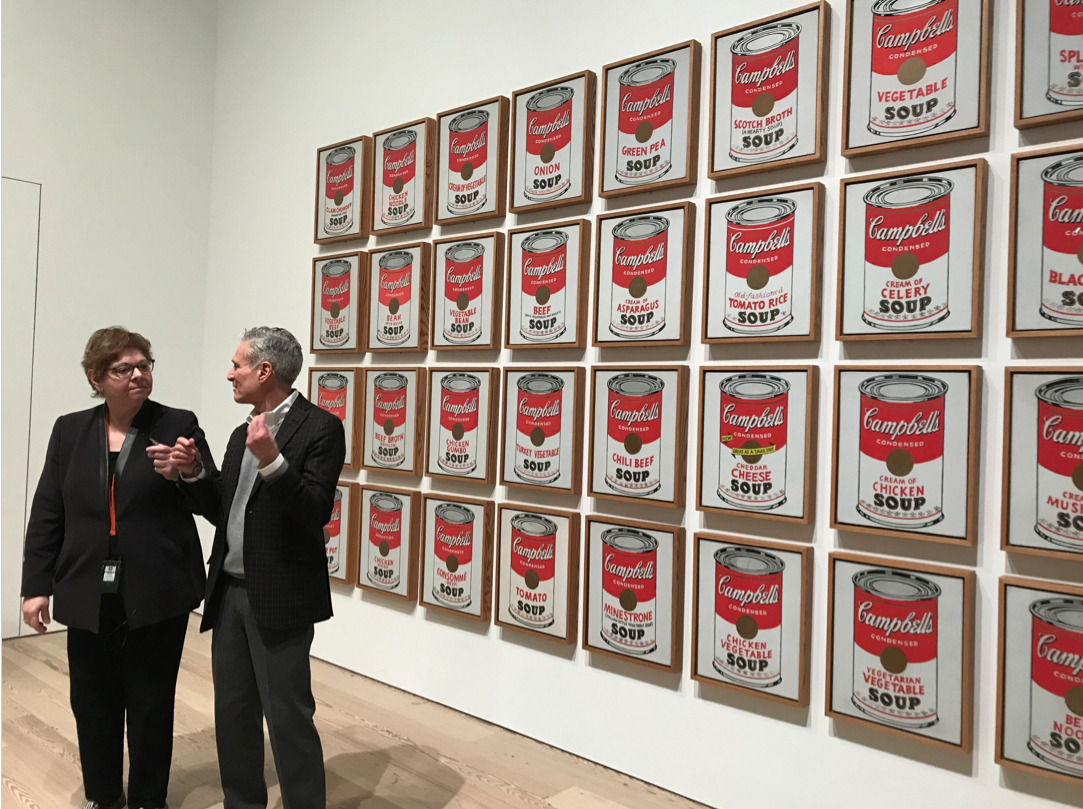
The exhibition Andy Warhol – From A to B and Back Again, title extracted from Warhol’s philosophy book, runs from November 12, 2018 to March 31, 2019. The largest U.S. retrospective of the artist since 1989 occupies the lobby gallery, Floor Three and Five, and encompasses Warhol’s artworks from 1950s to 1980s with an emphasis on his artistic trajectory, understated later works, and experimentation of materials.
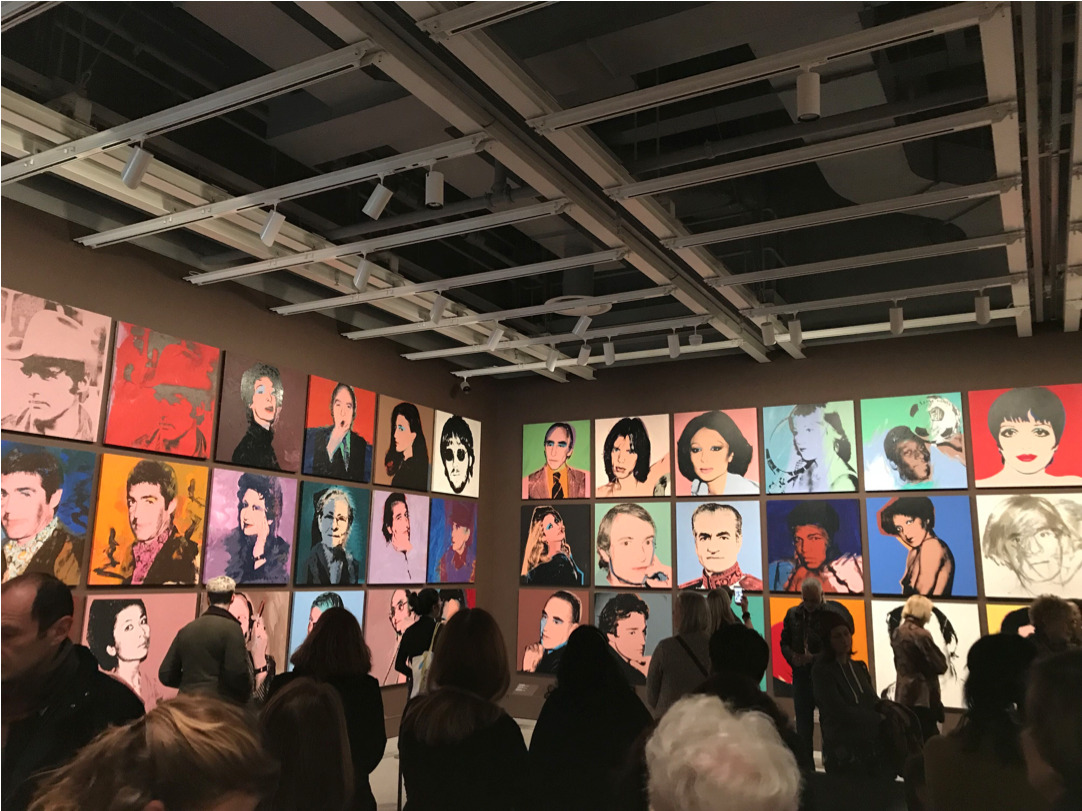
De Salvo and Printz introduced our tour in the lobby gallery where the celebrity portraits Warhol produced between 1968 and 1987 are exhibited. The paintings were installed in three rows chronologically and De Salvo organized them discreetly according to social and cultural groupings. To make these paintings, Warhol first took photos of the celebrities/friends with his Polaroid and then reproduced them using the screen-printing technique. He envisioned making a giant portrait of society, which was indeed a harbinger of today’s social media.
The group then headed to the fifth floor where the majority of Warhol’s artworks, in a wealth of mediums, are on display. First stopping at the dance diagrams made in 1962, De Salvo assimilated its circling back pattern to Warhol’s recursive working process and Printz elaborated on the curatorial intention in juxtaposing the illustration on the ground and the freestanding Brillo box sculpture (1964). Both highlighted the notion of space—while the sculpture represented a spatial obstacle and marker, the lying diagram recorded movements within space.
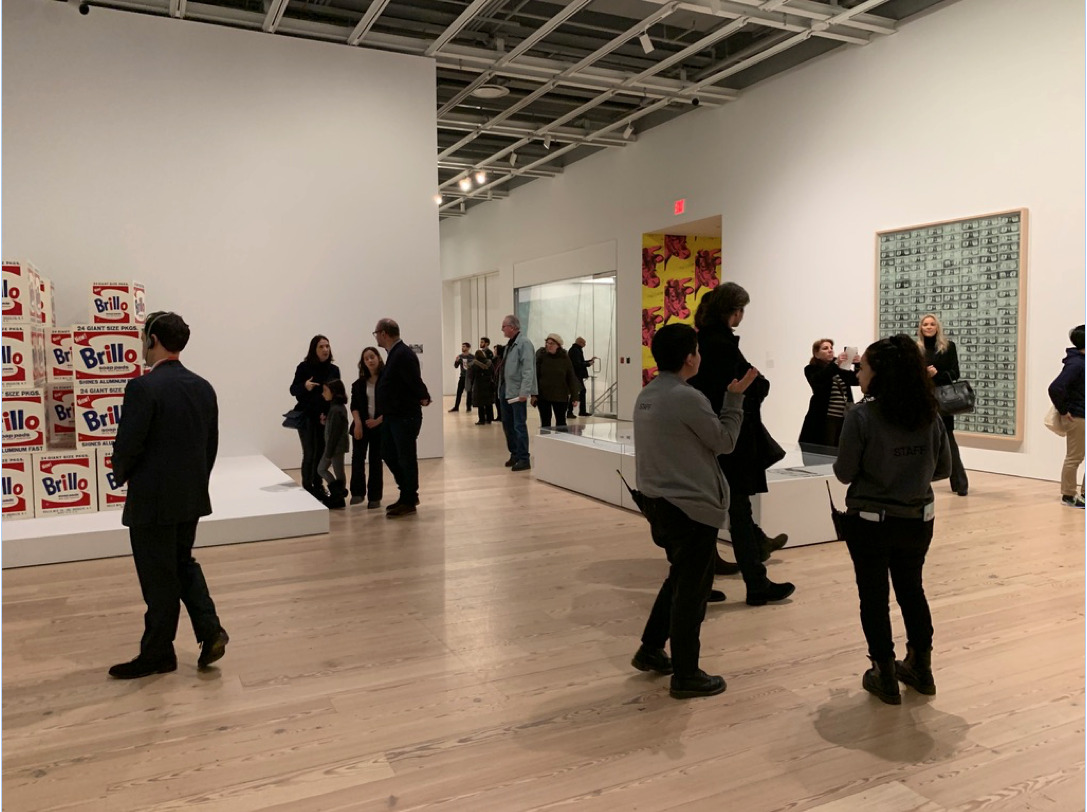
A room was dedicated to the Flowers (1964) series hung on four walls covered with Cow Wallpaper (1966). De Salvo explained that such an immersive installation was inspired by Warhol’s own direction of hanging his works on top of each other in the first Whitney retrospective in 1972. According to the artist, this made the viewing experience instantaneous and efficient. The small, medium, and large sizes of the hibiscus flower paintings mirror commercial culture. Moreover, the layering of the silkscreen on the paint on the wallpaper reflected Warhol’s labor, as he worked in an analogue layered process. To arrange and hang the 24 flower paintings in which Warhol experimented with color combinations was no easy job for De Salvo, given the flexibility that the composition and orientation warrant.
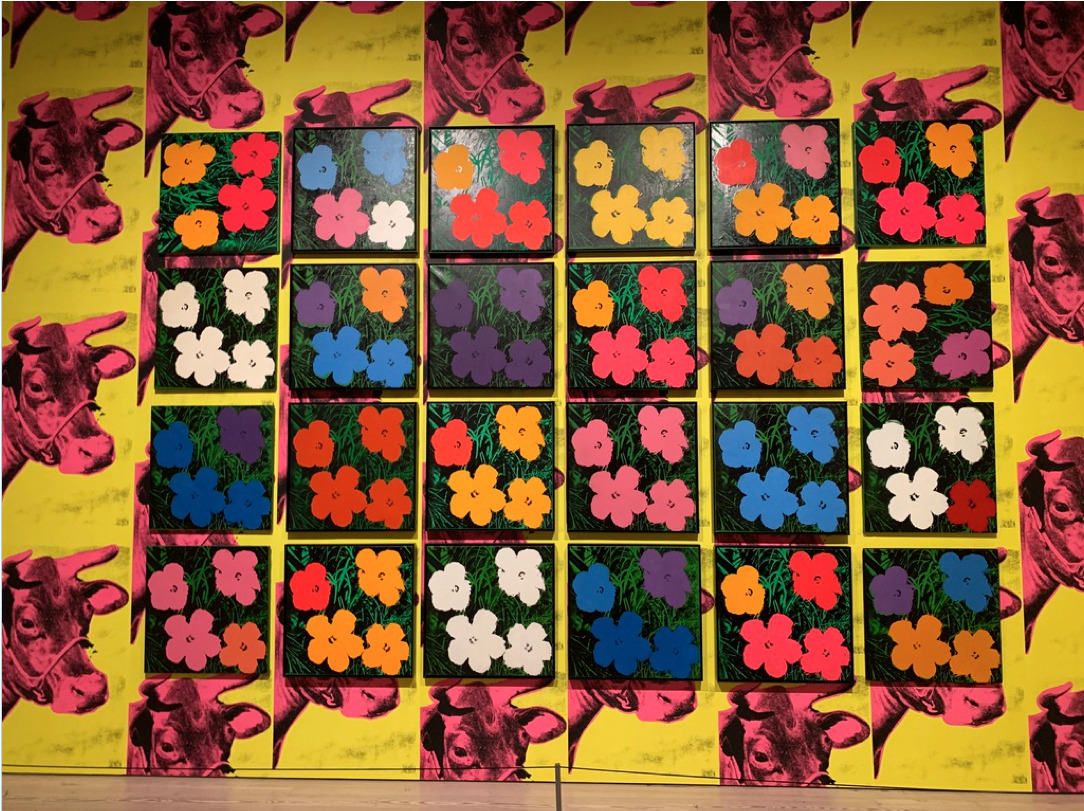
Having exited the flower room, the group proceeded to the section of Warhol’s early drawings. A classic painting depicting the living room in his own working-class household in 1948 was shown alongside the delineation of figures featured by “itchy lines” (as Printz’s friend called them) that manifest a tactile quality. On the other wall, the hand-drawn lines in the series of anthropomorphized gold shoes resemble prints. The Pop era came next, in which Warhol reproduced the images of coke bottles and comic strips by using opaque projection and painting his subjects freehandedly on the canvas. Warhol also paid close attention to the paintings’ surface and optical effect.
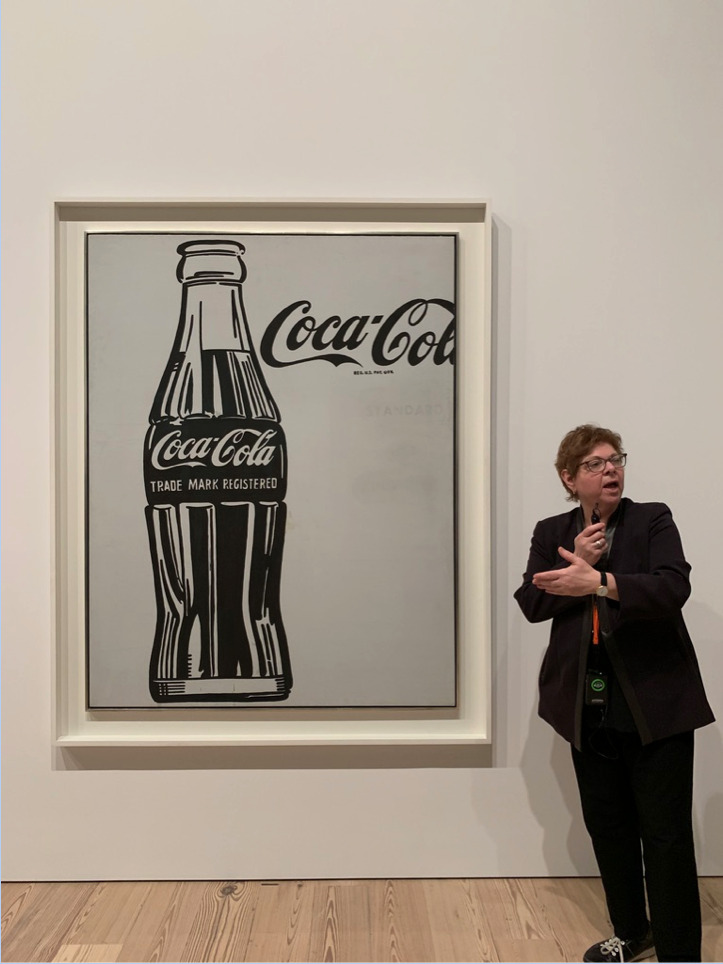
Warhol continued with silkscreen and used it as the under-drawing to which he applied color. The celebrity faces in repetition, Triple Elvis (1963) and Marilyn Diptych (1962) show the result of this technique. As Printz pointed out: “Irregularity is the king,” a close scrutiny of the paintings revealed subtle differences between the iterations of his subjects.
Warhol soon arrived at the pivotal moment in which he integrated cinematic quality into his paintings by means of shuffling photo strips to achieve a ‘montage.’
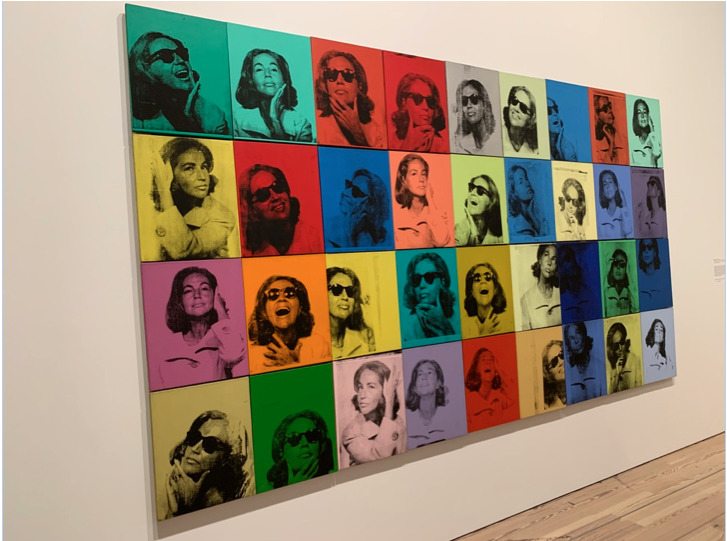
The audacity of pushing cultural buttons drove Warhol to produce the Death and Disaster series that addressed tragedy and violence. As a matter of fact, the seemingly celebratory, bright, peppy Pop art took on a critical perspective in examining daily objects and societal issues.
In the 60s, Warhol claimed to “retire from painting” and commenced experimental works like filmmaking, installation and performance. Then, in 1972, he returned to painting with a sequence of 200 portraits of Mao—the most famous person in the 20th century. The portraits were once shown altogether in Paris in 1974.
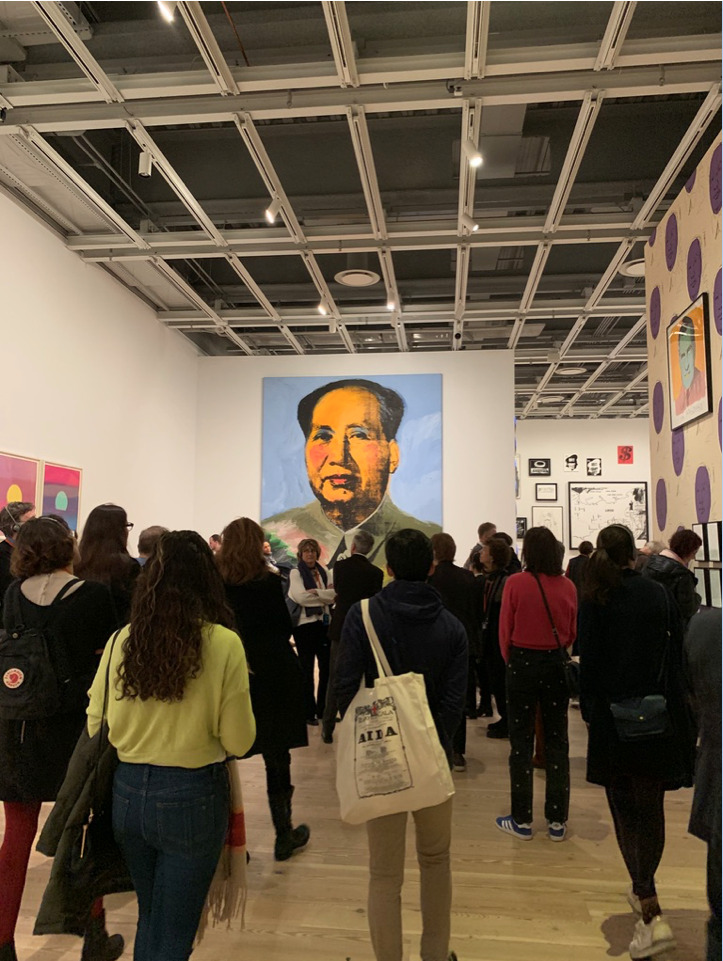
On the one hand, Warhol’s paintings in the 70s and 80s bore attributes of his early works, for instance the application of color in the skull series, the layering technique, the emphasis on the surface. On the other hand, the cynical and creative Warhol kept on experimenting and incorporating new elements into his wprl. Having played with the effect of light and shadow in the hammer and sickle and skull series (1976), Warhol made shadows his subject and turned to pure abstraction in 1978, the year he made Oxidation Painting with pigments and urine. The dripping technique was also an homage to Jackson Pollock.
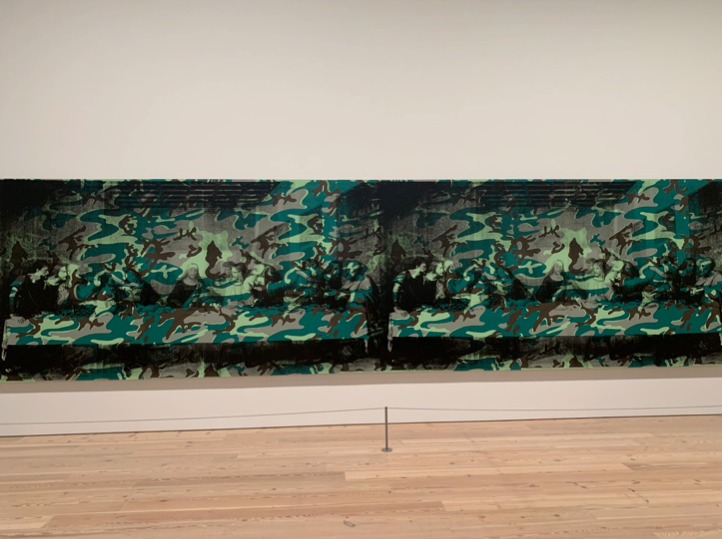
The tour drew to a close with the Camouflage Last Supper (1986) that conveys a mournful tone. Though this CIMA members tour drew to a conclusion, we recognize Warhol’s persistent omnipresence. As De Salvo concluded: “Everyone has their own Andy Warhol in mind. Warhol belongs not only to the 20th century but also to the 21st.”
